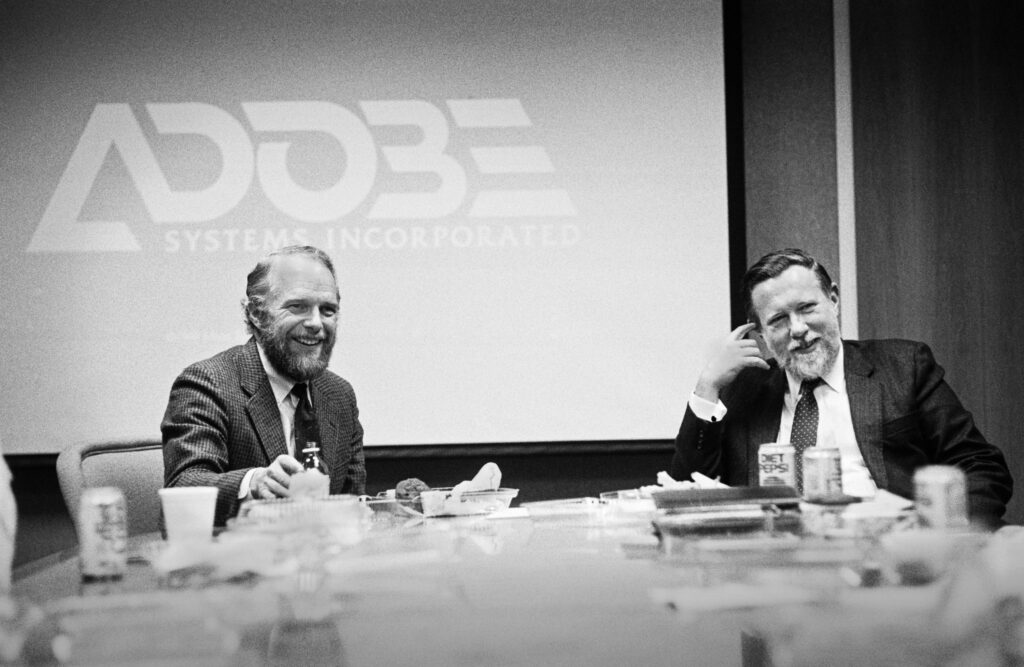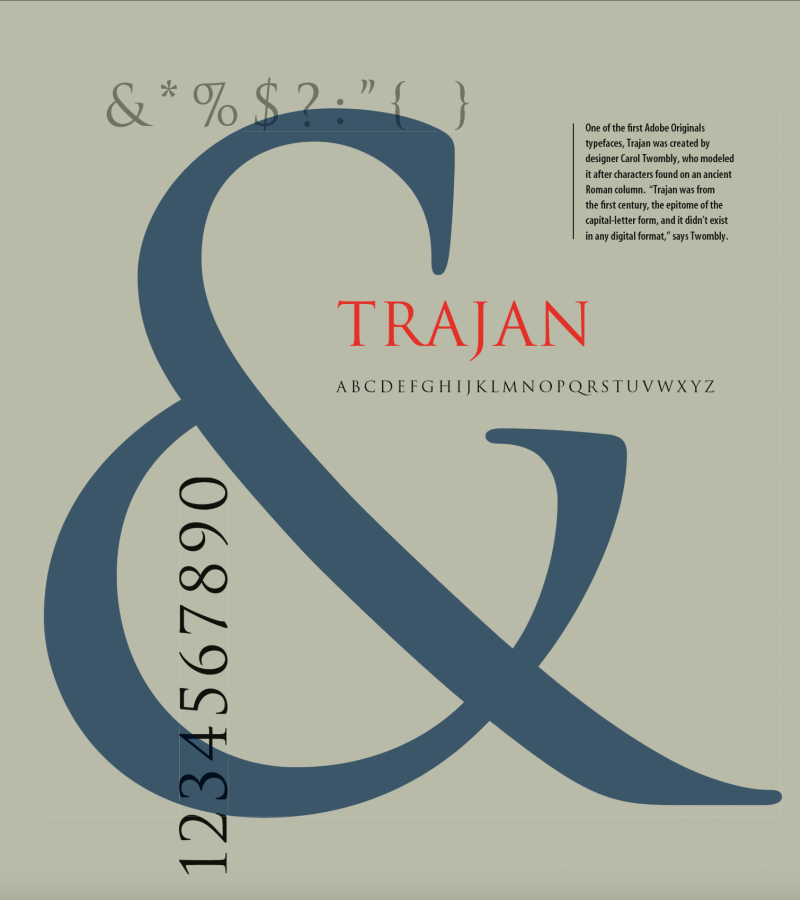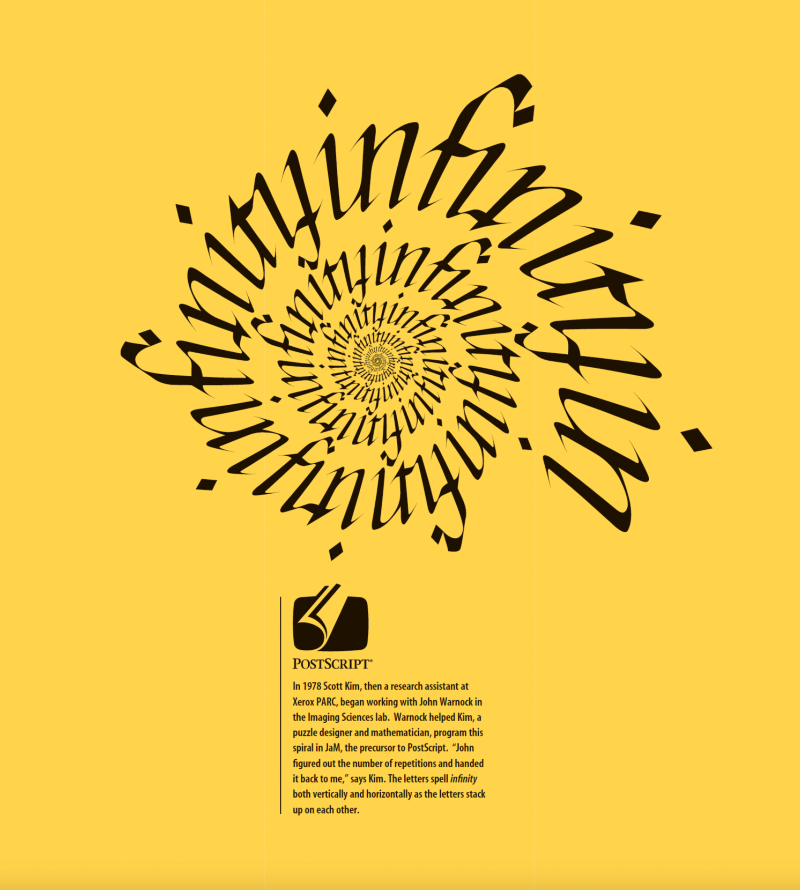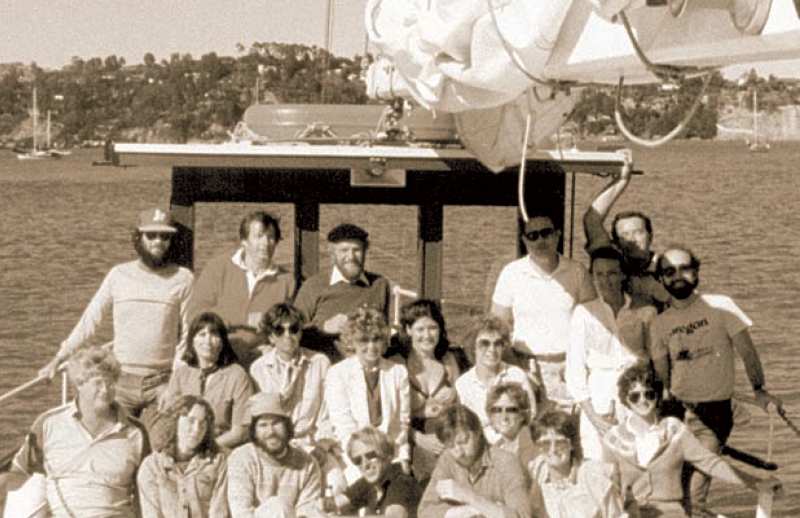
The story of PostScript has many different facets. It is a story about profound changes in human literacy as well as a story of trade secrets within source code. It is a story about the importance of teams, and of geometry. And it is a story of the motivations and educations of engineer-entrepreneurs.
The Computer History Museum is excited to publicly release, for the first time, the source code for the breakthrough printing technology, PostScript. We thank Adobe, Inc. for their permission and support, and John Warnock for championing this release.
Printing has always been a technology with profound cultural consequences. Movable type first emerged in east Asia, and, later, technology from wine and oil presses in 15th century Europe was combined with novel practices to mass produce type using metal casting to evolve the printing press, and with it, a revolution in human literacy. Books became cheaper and quicker to produce, and as a result appeared in ever greater numbers. Readers and libraries expanded. Greater access to information transformed learning, research, government, commerce, and the arts.

Adobe cofounders John Warnock (left) and Chuck Geschke (right). Courtesy Adobe Inc. and Doug Menuez.
From the start of Adobe Systems Incorporated (now Adobe, Inc.) exactly forty years ago in December 1982, the firm’s cofounders envisioned a new kind of printing press—one that was fundamentally digital, using the latest advances in computing. Initial discussions by cofounders Chuck Geschke and John Warnock with computer-makers such as Digital Equipment Corporation and Apple convinced them that software was the key to the new digital printing press. Their vision: Any computer could connect with printers and typesetters via a common language to print words and images at the highest fidelity. Led by Warnock, Adobe assembled a team of skillful and creative programmers to create this new language. In addition to the two cofounders, the team included Doug Brotz, Bill Paxton, and Ed Taft. The language they created was in fact a complete programming language, named PostScript, and was released by Adobe in 1984.
Chuck Geschke discusses how Adobe came to focus on PostScript as their initial business.
By treating everything to be printed the same, in a common mathematical description, PostScript granted abilities offered nowhere else. Text and images could be scaled, rotated, and moved at will, as in the opening image to this essay. Adobe licensed PostScript to computer-makers and printer manufacturers, and the business jumped into a period of hypergrowth. There was tremendous demand for the new software printing press. Computer-makers from the established worlds of minicomputers and workstations to the rapidly growing world of personal computers adopted the technology. Printer-makers joined in, from well-established printers to the new laser printers and professional typesetters. Software-makers rushed to make their offerings compatible with PostScript.
Fueling this growth were advances Adobe was making around a critical need: Providing professional-quality digital typefaces—and the many fonts that comprise them—for use within PostScript. Adobe developed a fresh approach to describing typefaces geometrically, and the company licensed many of the most well-known typefaces, including those for Asian languages. PostScript and the Adobe Type Library revolutionized printing and publishing, and kickstarted the explosive growth of desktop publishing starting in the 1980s. PostScript became so successful that it grew into a de facto standard internationally, with Adobe publishing the details of the PostScript language, allowing others to create products that were PostScript compatible. Today, most printers rely on PostScript technology either directly or through a technology that grew out of it: PDF (Portable Document Format).

An early typeface created by Adobe using its new technologies. Courtesy Adobe Inc.
John Warnock championed the development of PDF in the 1990s, transforming PostScript into a technology that was safer and easier to use as the basis for digital documents, but retaining all the benefits of interoperability, fidelity, and quality. Over the decades, Adobe had developed PDF tremendously, enhancing its features, and making it a crucial standard for digital documents, printing, and for displaying graphics of all kinds on the screens from laptops to smartphones and smartwatches.
Today, the digital printing press has far exceeded anything envisioned by the Adobe cofounders when they first set out create PostScript with their team. Almost everything printed on paper is done so using computers. Indeed, in many areas of the world, computers have become the overwhelming tool for writing. As Doug Brotz puts it, PostScript “democratized the print world.” With PDF now so successful that it too has become a global standard, the number of PDFs created each year is now measured in the trillions.
Typography is the combination of art and technique that is concerned with the display of writing, especially as printed. It is concerned with the shape and placement of characters, words, paragraphs, and so on. In this, typography is thoroughly graphical, a matter of visual design. Digital typography is no different, just focused to computer techniques and displays. It is fitting, then, that the roots of PostScript, and its contributions to the development of digital typography, lie in advanced computer graphics.
Adobe cofounder John Warnock, the architect for PostScript, launched his computing career as a graduate student at the University of Utah at the close of the 1960s. Utah was then one of the world’s foremost centers for advanced computer graphics research. In his work there, and then subsequently at a leading computer graphics firm run by the lead professors at Utah, David Evans and Ivan Sutherland, Warnock embraced their characteristic geometric approach to computer graphics. Shapes, scenes, images, and animations were created and designed by using mathematics to describe the geometry of the visual, and using various computer procedures to realize these descriptions as imagery. In particular, Warnock was impressed with the power of a procedural computer language he and John Gaffney helped to develop at the firm Evans and Sutherland, the “Design System.”
In 1978, Chuck Geschke had just set up a new organization in the famed Xerox Palo Alto Research Center (PARC), the Imaging Science Laboratory. Geschke hired Warnock into his laboratory, where Warnock took up a pressing challenge for the lab. PARC was creating a set of new experimental computers with new kinds of displays, and intended to be used with an array of novel printers—as PARC had recently invented the laser printer. The challenge, which Warnock took up, was to create a “device-independent” graphics system, which could be used across any computer, display, or printer. To meet this challenge, Warnock saw that something like the Design System could work if it were re-implemented in this new computing environment, but refocused from 3D graphics to PARC’s concern with professional quality printing and high-quality display of text and images on displays. The result was another geometrical, procedural language called JaM, that Warnock created in partnership with another PARC researcher, Martin Newell.

An image made using JaM, the predecessor to PostScript. Courtesy Adobe Inc.
From 1979 into 1981, JaM became a major component in a new effort in Geschke’s laboratory. This was a push to develop a printing language that could be commercialized, used with the production version of PARC’s experimental computers called the Xerox Star, and more broadly used across all of Xerox’s lines of printers. A group of six Xerox researchers—Chuck Geschke, Butler Lampson, Jerry Mendelson, Brian Reid, Bob Sproull, and John Warnock—melded the JaM approach with other more established protocol techniques. The result was named Interpress.
Xerox leadership was quickly convinced of the potential for Interpress, deciding that it would indeed be developed into the firm’s printing standard. However, moving to this standard would take several years during which time Interpress would be under wraps. This delay in the further refinement of Interpress by having it used and challenged more broadly outside of Xerox spurred Geschke and Warnock to move. They would leave PARC to create a startup in which they would create a rival to Interpress, but built more fully along the geometric, procedural language approach that Warnock found to be so powerful. But for the new startup to create this new language, PostScript, as the digital printing press it would require a brilliant team.
Chuck Geschke discusses the motivations behind the formation of Adobe. https://www.computerhistory.org/collections/catalog/102738493
John Warnock discusses key early actions in establishing Adobe.
In December 1982, when Chuck Geschke and John Warnock created Adobe Systems Incorporated, the new printing language they intended to create was at the very center of their plans, hopes, and vision. The future of the firm hinged on PostScript. Geschke and Warnock were themselves both highly experienced software creators. Geschke had earned his Ph.D. at Carnegie Mellon University working on advanced compilers, and had been a leader in the creation of an important programming language developed and used at PARC called Mesa. As discussed, Warnock had a Ph.D. in computer graphics software from the University of Utah and years of experience creating languages exactly like their envisioned PostScript. But even with, perhaps because of, their extensive background in creating cutting-edge software, the cofounders knew they needed to expand their team to create PostScript.

This photograph shows early Adobe employees and friends during a company party, sailing in the San Francisco Bay. Many of them were welcomed by Chuck Geschke (second from right in rear) and John Warnock (middle in rear) from Xerox PARC, including Doug Brotz (leftmost rear), Dan Putman (third from left in front), and Tom Boynton (right of Putman). Steve MacDonald (between Brotz and Warnock) came from Hewlett-Packard to serve as Adobe’s first head of sales and marketing. Linda Garger (third from right in front) was administrative assistant for Geschke and Warnock and the first official Adobe employee. Carolyn Bell (rightmost front) was an engineer. Marva Warnock, who designed the first Adobe logo sits immediately in front of John Warnock. Nancy Geschke, a librarian, sits in front and to the left of Chuck Geschke. Courtesy Adobe, Inc.
Adobe’s PostScript team quickly took shape as three other highly talented software creators from PARC decided to leave and rejoin with Geschke and Warnock: Doug Brotz, Bill Paxton, and Ed Taft. Brotz had earned a Ph.D. in computer science from Stanford before joining PARC in 1977, and became the first computer scientist on the payroll, after the cofounders of course. Paxton also had a Ph.D. in computer science from Stanford, and joined PARC the same year as Brotz. Taft had joined PARC earlier, hired by Geschke as soon as Taft finished his undergraduate studies at Harvard in 1973. Together, and with input from company colleagues like Andy Shore, the team created PostScript by the close of 1984.
Adobe’s commitment to a geometrical approach for PostScript carried consequences for how it would contend with typefaces—distinctive character shapes—and the numerous fonts that actually realize these typefaces at different sizes and styles (point sizes, regular, italic, bold, etc.). At PARC, fonts had been created as a set of individual, hand-crafted bitmap images—static definitions of which bits were on, and which were off, to create each character of the font. In contrast, researchers at PARC and beyond were exploring ways to define character shapes mathematically.
At Adobe, the team followed this mathematical description approach to fonts, in keeping with the broader direction of PostScript, defining characters using Bézier curves. But this still left the problem of device-independence. How could Adobe’s font definitions contend with different displays, printers, and different resolutions on both? For eyes so accustomed to reading published text, even the slightest inconsistencies or irregularities in the appearance of text are readily noticed and jarring. At lower resolutions, the chance for these defects only becomes worse. Rendering fonts reliably at different resolutions was a critical issue. Without a solution, PostScript could never become the digital printing press.

Elements of Adobe’s secret solution to creating professional quality fonts for different resolutions. Courtesy of John Warnock.
It was John Warnock who came up with Adobe’s solution, turning the problem itself into the solution. The resolution of the output would determine a set of procedures that would correct the fonts to optimize their appearance at that resolution. Warnock, Brotz, and Paxton worked on the procedures for months, eventually settling on ways to define key aspects of the font shapes, and fitting them to the pixel rows and columns of the specified resolution, and changing some aspects of the character shapes depending on the resolution. Eventually, the Adobe team decided that greatest advantage lay in keeping these approaches and procedures as a trade secret. They stayed secret in PostScript’s source code, known to very few at the company, until Warnock publicly disclosed them in a 2010 lecture.
The version of the PostScript source code released to the public by the Computer History Museum is a very early version, dating to late February 1984. While this version does contain an early version of the “font hinting” procedures later kept as a trade secret, these approaches were completely rewritten, expanded, and refined by Bill Paxton in subsequent months. These changes were critical to the success of PostScript as it fully came to market. Some modules that contain some low-level graphics engine functions are not included in this release. Adobe still retains trade secret rights in those modules. Otherwise, this collection is complete.
Chuck Geschke discusses the trade secret in the PostScript source code.
Thank you to Doug Brotz and Bill Paxton for their helpful comments on a draft of this essay. Thank you to Adobe Inc. and Doug Menuez for permission to use several images here.
This essay is based on oral histories and interviews conducted by the Computer History Museum, and several critical published sources:
J. E. Warnock, "The Origins of PostScript," in IEEE Annals of the History of Computing, vol. 40, no. 3, pp. 68-76, Jul.-Sep. 2018, doi: 10.1109/MAHC.2018.033841112.
WARNOCK, JOHN E. “Simple Ideas That Changed Printing and Publishing.” Proceedings of the American Philosophical Society, vol. 156, no. 4, 2012, pp. 363–78. JSTOR, http://www.jstor.org/stable/23558230. Accessed 13 Oct. 2022.
J. E. Warnock and C. Geschke, "Founding and Growing Adobe Systems, Inc.," in IEEE Annals of the History of Computing, vol. 41, no. 3, pp. 24-34, 1 July-Sept. 2019, doi: 10.1109/MAHC.2019.2923397.
Legally, PostScript® is a trademark of Adobe, Inc., used to identify its language and interpreter. For ease of reading, above we use the more common PostScript to denote both the PostScript® language and the PostScript® interpreter.
[UPDATED January 2023: Additional information about the completeness of the source code release was added for clarification.]
Learn more about the Art of Code at CHM or sign up for regular emails about upcoming source code releases and related events.